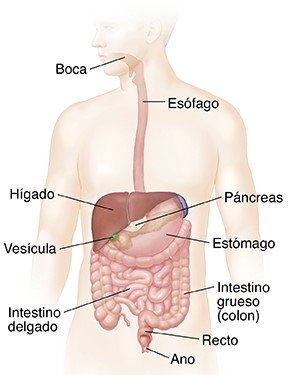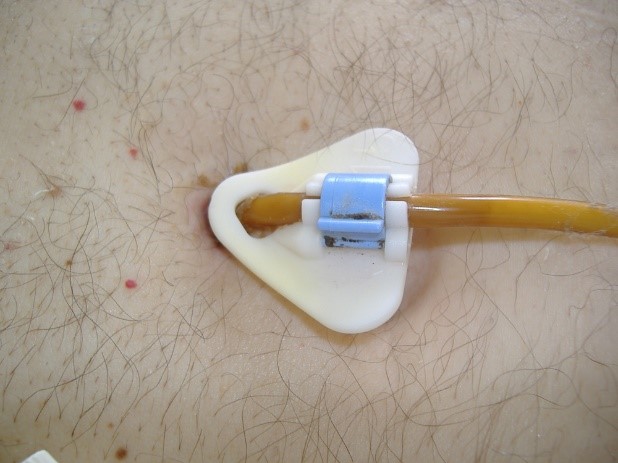Epidermolysis bullosa
4. Gastrointestinal system
- Oesophageal injuries: The oesophagus is a muscular tube that carries food and liquids from the mouth to the stomach. In people with severe forms of BE, it is common for swallowing and drinking to cause some trauma to the oesophageal mucosa and to form a blister. This will become an ulcer and will later heal. The repeating of this process over time will result in a narrowing of the oesophageal lumen (the space within the oesophagus becomes narrower), known as oesophageal stricture, which can lead to dysphagia. Dysphagia is difficulty in swallowing solids and/or liquids.
- Other oesophageal complications that have been related to EB are pre-stenotic dilation (the oesophagus is enlarged just above where the stricture has occurred), esophagitis (inflammation of the lining of the oesophagus), decreased movement of the oesophagus, and oesophageal spasms (involuntary and painful contraction of the oesophagus). Fluoroscopy-guided or endoscope-guided balloon dilations are used to treat oesophageal strictures.
- Lower digestive tract injuries: The most frequent complication associated with this portion of the digestive tract is chronic constipation, very typical of the most severe forms of BE. People with EB, especially children, can be very reluctant to go to the bathroom because of the pain it can cause them. This pain is often the result of erosion of the mucosa of the rectum and anus, causing painful wounds and fissures. In addition, when these wounds heal repeatedly, the same thing happens as in the oesophagus: the anal canal narrows and makes the defecation process even more difficult. By associating the defecation process with pain, children can develop functional chronic constipation. That is why diets rich in fibre, abundant hydration and stool softeners are recommended so that the defecation process is not so painful and to avoid wounds and stenosis in the anal canal. Chronic, long-term retention of stool can lead to megacolon (dilation of the end of the digestive tract) and encopresis, which is the involuntary passage of stool. The chronic affectation of the intestine by blisters and ulcerations at different levels produces, in the most severe forms of EB, a malabsorption of nutrients and vitamins, affecting nutritional status.

Chronic malnutrition: it is one of the most important complications in severe forms of EB. The nutritional requirements of a person with EB are greater than those of a healthy person, due to the continuous process of wound healing and the need to heal skin infections. However, difficulties in oral intake due to the pain of oral blisters, dysphagia caused by oesophageal stenosis, and malabsorption due to intestinal affectation frequently prevent people with EB from being able to ingest all the nutrients that their body needs, which affects their nutritional status. For this reason, periodic medical follow-up with special monitoring of nutritional status is essential. On many occasions, an enriched diet and/or nutritional modules (supplements in the form of shakes or powders to increase the supply of nutrients in meals) are prescribed. When there is a stagnation in weight despite optimizing nutritional support measures, performing a gastrostomy is very useful, which allows the direct administration of food and medications to the stomach without having to swallow them. To obtain maximum benefit from gastrostomy, it is important to perform it before there is a state of advanced malnutrition. Maintaining an adequate nutritional status will allow better healing of skin lesions, better defence against infections, maintenance of muscle mass and, in general, a better quality of life in people affected by EB.
